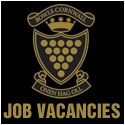A BRIEF HISTORY OF BOWLS IN CORNWALL
There are records of the game of bowls being played in Cornwall well before the 20th century. The Golden Jubilee Handbook refers to the bowls being played on the Castle Green at Launceston in around 1660 and there is note of the bowling green of Mr Samuel Line below The Walk, Launceston, in 1731 which closed in 1881 by order of the Home Secretary. The Encyclopaedia of Bowls (1959) mentions a bowling green at Treverden, near Wadebridge, said to have been in existence in the fifteenth century, and at Falmouth a conveyance dated 1701 states that Mr Alexander Pendarves at Falmouth gave a piece of land to Dennis Russell for “a bowling green on which bowls were to be played for ever with no other game allowed”. The Helston Club was formed in 1760 and the first bowling club in St Austell, close to the town centre, was formed in 1820.
It was, however, in 1912 at a meeting held at Tabb’s Hotel in Redruth that an association of Clubs, the CCBA, was formed. The clubs taking part in that meeting were Truro, Falmouth, Helston and Penzance. The first President of the Association was Sir Edward Nicholl who held that position until he passed away in 1939. During this period a Chairman was elected annually. Since 1940 a President has been elected annually. The first President under the new arrangement was Mr Harry Kenyon of Penzance who was also Secretary of the Association 1922-52 and Treasurer from 1925-53!
The first County match of the Association was played in 1920 at Falmouth against the neighbouring County, Devon.
Unfortunately the County records for the years between 1912 and 1922 have not been handed down but the records for 1922 show that the number of affiliated clubs had reached 10. There was a steady increase in the number year by year, some clubs fell by the wayside, and the present number is now 48 affiliated clubs.
In 1925 the clubs were divided into four Divisions, North East, South East, Central and Western. The clubs comprising each Division has varied over the years and changed in 1958 to amalgamate the North and South East and split the Western to form Southern. At this time the County League rules were changed to set up four divisions, each club able to enter not more than two teams. The Divisional winners to play off on a knock out basis. Clubs were to nominate eight players per team. These nominated players could not play for any other team. This format formed the basis for the league structure to the present day.
In 1926 the EBA invited the County to play a match against the South African Tourists and a ballot resulted in this match being played on the Penzance green. 1928 saw another national touring team, New Zealand, playing a match at Bude. South Africa were welcomed back in 1948 and played at Newquay, Cornwall winning by 143 to 127. In 1950 the County played the Australian Touring team at Newquay, Cornwall winning by 165 to 104. In 1951 the New Zealand tourists returned and Cornwall won 138 to 105 at Newquay. Unfortunately the New Zealand President was later taken ill at his Hotel and died. A Canadian Touring team visited in 1952 and played a combined Cornwall and Devon team. South Africa returned to Cornwall in 1964, Cornwall won the match played at Newquay by 10 shots.
It was agreed in 1936 that a County Tour should be arranged in 1937. This was the first official tour organised by the Association and was the forerunner of many successful tours since that date, a tradition that continues.
The 1940 AGM had to consider which competitions and leagues could continue as a result of the war. It was agreed to continue with the Nicholl Cup and Constantine Cup leagues, but to cut the latter down from 3 rinks to 2 rinks. The other County Championships would not be held with the exception of the Charity Cup. In 1942 Mr Kenyon donated a cup for the runners up in the Nicholl Cup Competition.
1945 saw the first suggestion for a law preventing players from following their bowls. A subject that will always be controversial, the CCBA decided not to forward the suggestion to the EBA. Also at this AGM it was resolved to resume playing the County Championships but not to enter a Middleton Cup team because of transport and hotel difficulties. The County re-entered the competition the following year, and it was on Cornwall’s proposition in 1958 that the Middleton Cup changed from a knock-out competition to groups up to the quarter final stage.
Arrangements were made during 1961 for the Jubilee Year in 1962. Badges and Spoons commemorating the Jubilee were purchased. The EBA spent a week in Cornwall, with fixtures against the Southern Division at Falmouth Docks, the North East at Looe, the Western at Penzance, the Central at Trenance, the President’s team at Redruth and the County team at Wadebridge. The County Tour was based in London, with fixtures against Surrey, Middlesex, Kent, Essex, Bucks and Herts. A ticket for the Jubilee Dinner at the Hotel Bristol cost 19/-!
It was agreed at the AGM in 1966 that a levy of 1/- per entrant be imposed on each club for the purpose of providing assistance towards travelling expenses for those in the National Champions Finals.
The Secretary’s report for 1974 made mention of three young bowlers, David Cutler who won the EBA under 25’s single title at the age of 20 and Neil Richards and Richard Bray who took part in Tournaments at the ages of 11 and 10 respectively. David and Richard went on to have a very good bowling record. Both won British Isles titles; David in the Triples and Richard in the Singles and Fours and both played for the National team. In recent times, the late 20th Century and the early 21st Century, Cornish players and teams have achieved excellent results in National Competitions as can be seen on page 28.






